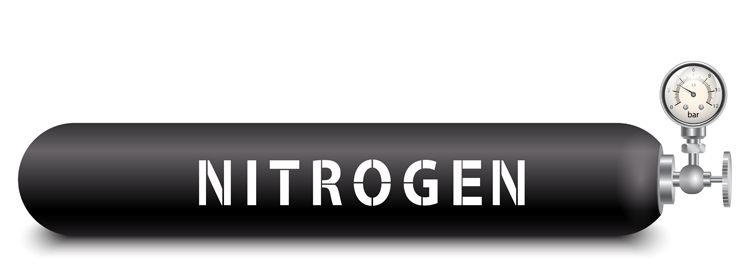Why Oklahoma plans to execute people with nitrogen

Shutterstock.com.
Oklahoma has always been the nation’s laboratory for capital punishment.
It was a state legislator named Bill Wiseman who in 1977 came up with the idea of lethal injection by asking the state medical examiner for a more humane, scientific way to put human beings to death.
It looks like Oklahoma might be experimenting again. On Wednesday, the state’s Attorney General and director of corrections announced that a severe nationwide shortage of the drugs needed for lethal injection meant they would be switching to nitrogen inhalation for future executions.
Executing prisoners by nitrogen “hypoxia,” which deprives the body of oxygen, has never been tried by any state or nation in the history of the world. But the gas is widely available for purchase from manufacturers (it has a host of uses from welding to inflating tires to carbonating beer), which can’t be said of the lethal injection drugs midazolam and pentobarbital. For humanitarian reasons, medical companies have largely stopped providing those chemicals to state governments.
“I was calling all around the world, to the back streets of the Indian subcontinent, to procure drugs,” Joe M. Allbaugh, Oklahoma’s corrections director, said in his announcement of the switch to nitrogen.
Allbaugh and state Attorney General Mike Hunter said Oklahoma could begin the nitrogen executions by the end of this year. They said there would first be a period of 90 to 120 days for developing the new method and allowing lawyers for death row prisoners to make their legal challenges in court.
Below, a recap of everything Oklahoma knows about its latest proposed execution method (hint: very little).
HOW THEY GOT THE IDEA
In 2014, a Republican state representative and former highway trooper named Mike Christian watched a BBC documentary called “How to Kill a Human Being,” which included a segment on nitrogen inhalation. Intrigued, he called up a high school friend, Michael Copeland, who had previously served as attorney general of the small island nation of Palau.
Copeland asked medical professionals at the University of Oklahoma to help study the idea, but they declined. Instead, he and two other non-scientists compiled a nitrogen report for the state Legislature — which they presented after preparing for just three hours one evening, according to Christine Pappas, a local professor and one of those involved.
Their sources included articles from 1963 and 1977, as well as information on techniques of inert gas asphyxiation used by assisted-suicide activists.
HOW IT BECAME LAW
After reading the report, Oklahoma lawmakers held a series of hearings on nitrogen gas, during which they watched YouTube videos of teenagers inhaling helium, laughing and passing out.
They also considered a financial analysis that said “the costs would be minimal and include the one-time purchase of a gas mask (similar to what one experiences at the dentist), and the price for a canister of nitrogen.”
A two-page bill introducing the new method overwhelmingly passed both houses of the Legislature in spring 2015, with the few holdouts expressing concern that prisoners might experience brief euphoria before they lost consciousness and died.
THE RATIONALE
Backers of the nitrogen method have argued that because the gas is not itself poisonous (it just crowds out oxygen), it will provide a more humane death than paralytic drugs.
The idea, ostensibly, would be to cover the condemned inmate’s face with a gas mask and fill it with nitrogen. He would then gradually and painlessly lose consciousness, much like a deep-sea diver or a mountain climber at high altitude.
Christian, the bill’s sponsor, explained it this way to a German newspaper: “You just sit there and a few minutes later, you’re dead.”
THE SCIENCE
“It’s nonsense, empirically,” said Joel B. Zivot, an anesthesiologist at Emory University, in a 2015 interview with The Marshall Project.
No medical research exists, for example, as to whether the nitrogen should be released gradually or all at once to achieve the intended effect. Nothing is known about what might happen if the prisoner resists by thrashing or breaking the seal of his mask — or by refusing to breathe, which could lead to a painful accumulation of carbon dioxide in the lungs.
In his statement to the German newspaper Der Spiegel, Christian may have revealed his and Oklahoma’s actual reason for adopting such an untested execution protocol. One way or another, he said, “We will put these beasts to death.”
This article was originally published by The Marshall Project, a nonprofit news organization covering the U.S. criminal justice system. Sign up for their newsletter, or follow The Marshall Project on Facebook or Twitter.
Write a letter to the editor, share a story tip or update, or report an error.


